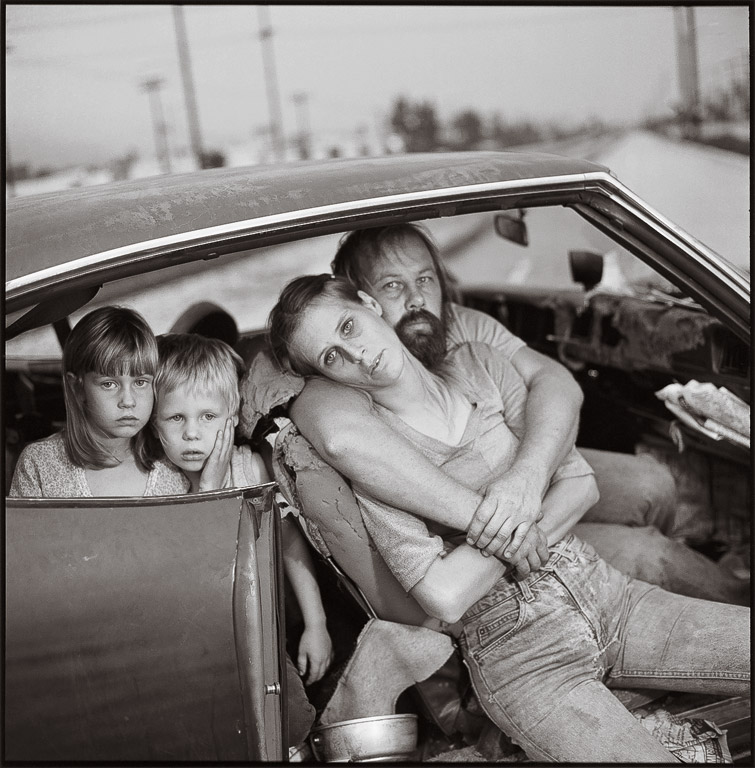Urban Exile: Homeless Families/Youth Numbers Defy Experts’ Undercounts
by Diane Nilan
WITHIN 3 MINUTES of sitting down for a haircut at one of those places that asks for everything but your social security number to cut your mop, I heard about two more homeless families, known to my hairdresser-du-jour.
So, can we quit being distracted wrangling over the homeless definition issue and start really doing something about it?
Embarrassing truth be told, how to define homelessness has been a time-consuming hassle for years. Those of us who’ve worked with homeless families and youth, more so those who are in that deplorable situation, would point to the stark reality: millions of families, youth and adults, don’t qualify as “literally homeless,” HUD’s extremely narrow definition including those on the streets or HUD funded shelters, thereby excluding them from what little help is available. Foreclosure crisis, poverty’s rise, economic meltdown and decades of government cutbacks be damned….
More people who have lost housing (isn’t that at the crux of homelessness?) are doubled-up (or worse) with others, staying in motels, campgrounds, vehicles, storage units, or otherwise in unsheltered conditions. The U.S. Department of Education uses the more realistic definition. Schools have identified a record number of 1,031,069 homeless students. That’s probably about half, but it’s at least a good, hard number, albeit excluding include younger or older siblings and parents.
 One long-time opponent of expanding the definition is Dennis Culhane, professor at University of Pennsylvania.The latest edition of a respected journal, CQ Researcher (www.cqresearcher.com), comprehensively explored the issue of homeless students. In it, Professor Culhane made his position known on the homeless definition issue, as did my friend, colleague and public policy director of the National Association for the Education of Homeless Children and Youth, Barbara Duffield.
One long-time opponent of expanding the definition is Dennis Culhane, professor at University of Pennsylvania.The latest edition of a respected journal, CQ Researcher (www.cqresearcher.com), comprehensively explored the issue of homeless students. In it, Professor Culhane made his position known on the homeless definition issue, as did my friend, colleague and public policy director of the National Association for the Education of Homeless Children and Youth, Barbara Duffield.
Culhane points out, “…Eligibility does not automatically entitle the homeless to housing, income or services, so expanding the definition without expanding the resources would effectively leave many more people with little or nothing.”
To which I respond, “Well, duh.”
Seriously, expanding the pathetic $2 billion to something in the neighborhood of $20 billion to address homelessness is critical. The cost of not doing so, in long-term and short-term harm done to children and youth is incalculable. For those interested in the issue of homeless children, youth and families, the Institute of Children, Poverty and Homelessness just released their comprehensive American Almanac of Family Homelessness.
How do we make a case with our dysfunctional Congress about the need for additional resources if we keep the number artificially (and I’d add immorally) deflated at HUD’s delirious 635,000 or so?
I just can’t picture House Speaker Boehner and Senate President Reid deciding to compassionately expand funding.
The definition issue has been going ever since the 1987 enactment of the McKinney Act, the federal approach to homelessness. Since then, government slash-and-burn tactics have pushed millions of babies, toddlers, children, teens, young adults and parents and single men and women to the streets, with HUD concentrating, with mixed results, on the most visible minority, “chronically” homeless adults.
Their seeming refusal to help vulnerable kids and families escape the danger and discomfort of homelessness baffles me. Marcia Clemmitt, author of one of the CQ stories, explores why the HUD numbers and DOE numbers are so vastly different. Culhane, she writes, believes HUD’s declining homeless census is attributed to trained observers and a slight bump of Obama stimulus spending.
Culhane dismisses the education numbers garnered by school district homeless liaisons documenting homeless students and families self-reporting. I’d point out that they’re looking at the whites of the eyes. And if more overworked liaisons did their jobs better, the school numbers would likely be doubled. Real people. Documented.
And, for the record, as I travel under my HEAR US banner and talk with local do-gooders—the shelter staff whose HUD-funded shelters struggle with the human tsunami—I constantly hear how the vaunted Point-In-Time count is little more than a shot in the dark required to satisfy HUD’s requirements. Trying to make it sound like anything more is disingenuous.
Can we quit the war of numbers? Can we as a nation admit we have a problem? Can we count the millions of our sisters and brothers who languish without a place to call home instead of quibbling dispassionately about who’s “literally” homeless?
We’ve made incremental progress, certainly not enough if you’re standing at the outside looking in. I’d suggest a week without a home for the ivory tower denizens. A reality check. Those not “literally homeless” could teach a thing or two. If that doesn’t work, I’ll point you to Maggy, my hair stylist.

